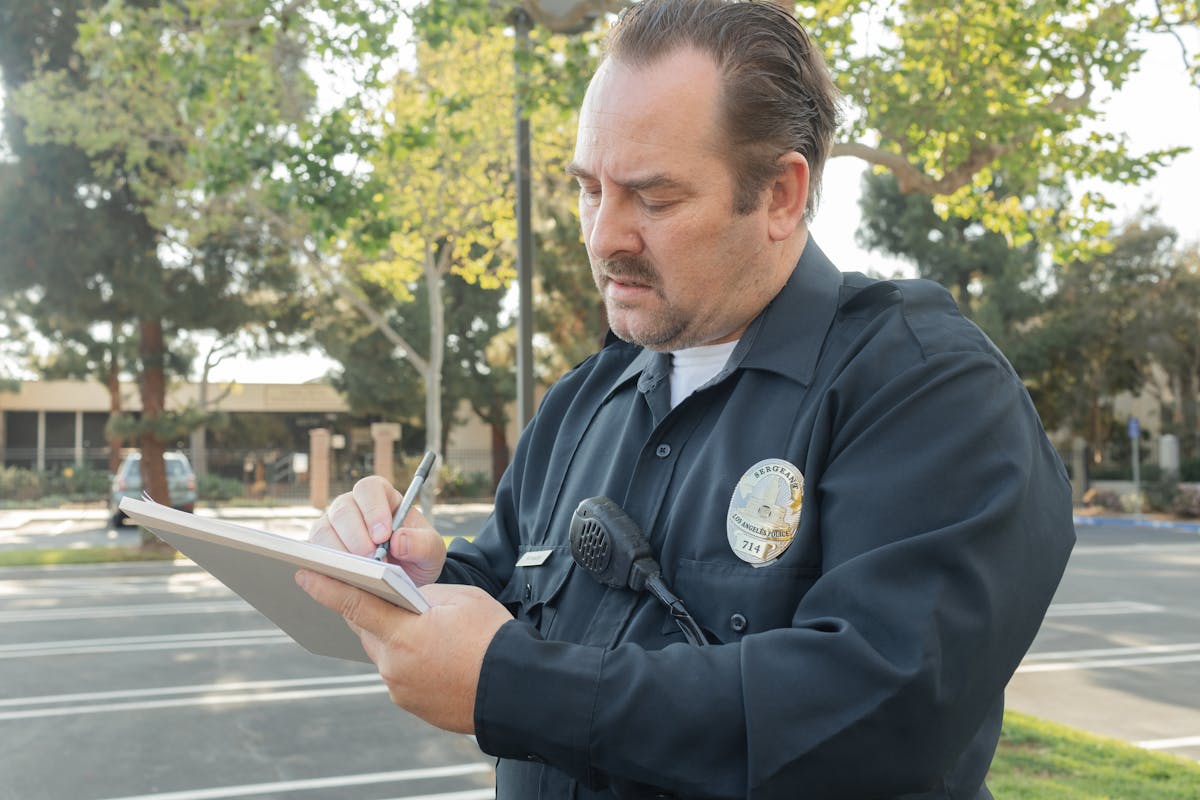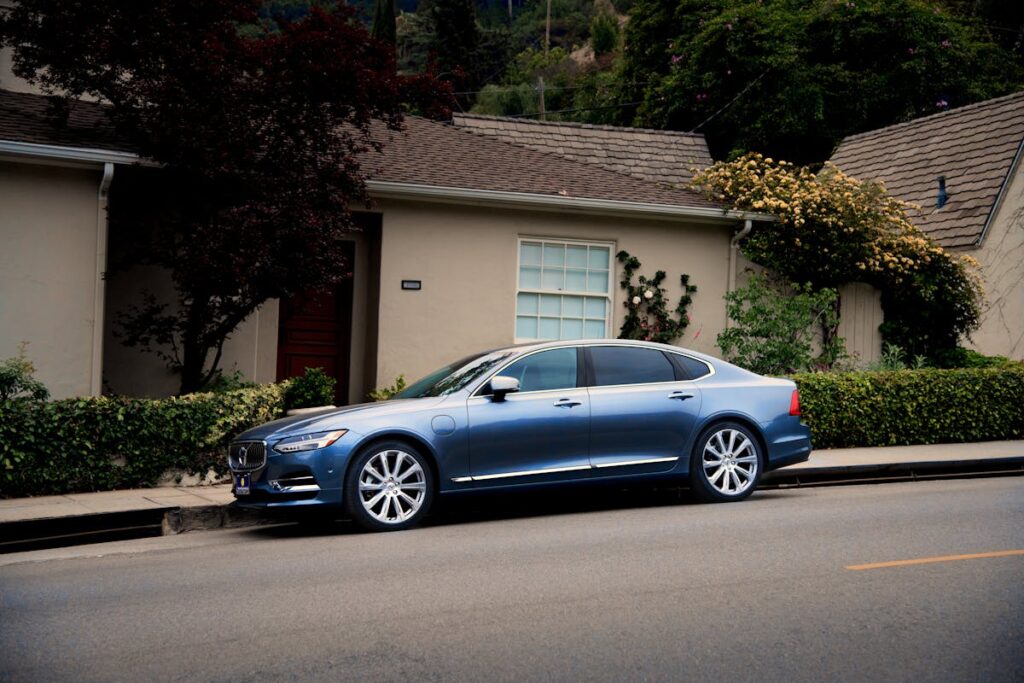Experiencing a hit and run on a parked car in California can be both frustrating and overwhelming. It is essential to take immediate steps to protect one’s interests and guarantee accountability. Evaluating the damage, gathering evidence, and understanding legal obligations are important. Reporting the incident promptly to authorities and insurers can facilitate claims and potential compensation. This process, though complex, is crucial in maneuvering the aftermath effectively. But what specific actions should one prioritize next?
Assess the Damage and Ensure Safety
After a hit and run incident occurs, it is essential to promptly assess the situation to determine the extent of the damage and secure the safety of all individuals involved. Initially, a thorough damage evaluation of the vehicle should be conducted. This involves visually inspecting the car for noticeable dents, scratches, or broken parts, as well as checking for any fluid leaks or compromised structural integrity. Concurrently, safety precautions must be undertaken to guarantee the safety of bystanders and passengers. This may involve moving the vehicle to a safer location if it poses a hazard, activating hazard lights, and setting up warning triangles. Additionally, it is critical to stay vigilant and avoid potential dangers, such as oncoming traffic or unstable vehicle parts.
Gather Evidence at the Scene
Collecting evidence at the scene of a hit and run is essential for the subsequent investigation. Accurate evidence collection begins with photographing the vehicle from multiple angles, capturing images of damage, debris, and any skid marks. This accident documentation provides an objective visual record of the incident’s aftermath. In addition, noting the exact location, time, and date of the incident is vital. Document any environmental factors, such as weather conditions and lighting, that may have influenced the event. Consider using a notepad or a digital device to record these observations meticulously. Moreover, if any paint transfer or foreign materials are present on the vehicle, they should be documented and preserved, as they may provide critical information for identifying the fleeing driver.
Look for Witnesses and Surveillance Cameras
After a hit and run in California, identifying nearby witnesses can provide vital information about the incident. Checking security footage from surrounding businesses or residences may offer visual evidence that aids in identifying the fleeing vehicle. Gathering contact information from witnesses and obtaining copies of surveillance videos are essential steps that can strengthen the case with concrete evidence.
Identifying Nearby Witnesses
In the aftermath of a hit and run in California, how does one efficiently gather information from the scene? Identifying nearby witnesses is essential. Observers can provide valuable witness statements that may lead to solving the incident. To begin, systematically scan the area for individuals who might have seen the event. Approach them calmly and politely request their account of what transpired. Consider the importance of eyewitness reliability; factors such as distance from the incident, lighting conditions, and the individual’s attention during the event can affect accuracy. Collect contact information for potential follow-up, ensuring details are documented. It is recommended to record conversations, if possible, for future reference. Such meticulous gathering of witness information can be instrumental in investigations.
Checking Security Footage
When addressing the aftermath of a hit and run in California, examining security footage is a critical step in gathering evidence. Surveillance cameras are often installed in public parking lots, businesses, and residential areas. Identifying potential locations of these security cameras is essential. A methodical approach involves scanning the immediate vicinity for visible cameras that might have captured the incident.
Conducting a thorough footage review can reveal valuable details such as the offending vehicle’s make, model, and license plate number, as well as the time and sequence of events. It is advisable to contact property owners or managers to request access to their recordings. Prompt action is necessary, as many systems overwrite data within days. This step could greatly aid in identifying the responsible party.
Gathering Contact Information
Locating witnesses and surveillance cameras is essential in gathering contact information after a hit and run incident in California. Analyzing the scene, individuals should systematically identify potential bystanders who may have observed the incident. Engaging these witnesses is a critical step in the information exchange process, as they can provide valuable contact details and firsthand accounts. Additionally, surveillance cameras, often present in parking lots or nearby businesses, serve as objective sources of information. Systematically evaluating their presence and ensuring footage is accessible are necessary actions. Contacting the property owners or security personnel to obtain relevant footage can help reconstruct events. Collecting these contact details and data sources enhances the likelihood of identifying the perpetrator and facilitates a more thorough investigation.
Report the Incident to the Police
Promptly notifying law enforcement after a hit and run in California is essential to guarantee an accurate record of the incident. By reporting the incident to the police, individuals assure that a thorough police report is created, serving as critical incident documentation. This report details the circumstances of the hit and run and includes any available evidence, such as witness statements or surveillance footage, which may aid in future investigations.

Filing a police report also establishes a formal record required for potential legal or insurance proceedings. It is advisable to provide law enforcement with all relevant information, including the location, time, and any identifiable details about the fleeing vehicle. An expedited response from the authorities can greatly influence the outcome of the case and assist in identifying the responsible party.
Notify Your Insurance Company
Contacting the insurance company after a hit and run in California is an important step in managing the aftermath of the incident. The vehicle owner should promptly initiate the process of filing insurance claims to guarantee coverage under their policy. It is vital to review their policy coverage details to determine if the incident falls under extensive or uninsured motorist protection. Providing the insurance company with a police report reference number, photographs of the damage, and any witness information can expedite claim processing. Timely notification not only facilitates a smoother claims process but also helps determine deductible responsibilities and potential premium impacts. Failure to promptly inform the insurer may lead to complications in claim approval, affecting the financial recovery for repair costs.
Understand California’s Hit and Run Laws
California’s hit and run laws impose specific legal obligations on drivers involved in accidents, requiring them to stop and provide identification and assistance. Failing to meet these obligations can result in severe penalties, including fines, imprisonment, and license suspension. Understanding these laws is essential for both compliance and awareness of the potential consequences for offenders.
Legal Obligations Explained
Maneuvering through the aftermath of a hit and run incident in California requires a clear understanding of the state’s legal obligations. Individuals involved must be aware of their legal responsibilities, particularly concerning accident reporting. California Vehicle Code Section 20002 mandates that a driver who collides with a parked vehicle must attempt to locate the owner and provide their contact information. If the owner is not found, the driver must leave a note with their name, address, and explanation of the incident, securely attached to the damaged vehicle. Subsequently, the incident must be reported to local law enforcement within 24 hours. Adhering to these requirements guarantees compliance with state laws and facilitates the process of resolving the aftermath of such accidents.
Penalties for Offenders
Understanding the penalties for hit and run offenses in California is essential for grasping the legal repercussions that offenders may face. California law categorizes hit and run incidents into misdemeanors or felonies based on the damage or injury caused. Misdemeanor charges apply if only property damage occurs, with hit and run penalties including fines up to $1,000 and potential imprisonment for up to six months. Offender consequences escalate dramatically if injury or death is involved, resulting in felony charges. Felony convictions may lead to fines up to $10,000 and imprisonment ranging from 16 months to four years. Additionally, offenders face mandatory restitution to victims and potential suspension of their driving privileges, underlining the serious nature of these violations.
Explore Options for Uninsured Motorist Coverage
When faced with the aftermath of a hit and run, how can drivers in California guarantee they are financially safeguarded? One effective solution is to explore options for uninsured motorist coverage, a vital component of auto insurance policies. This coverage provides financial protection when the at-fault driver cannot be identified, as in hit-and-run scenarios. Analyzing uninsured motorist benefits is essential, as these benefits can cover damages to a vehicle, medical expenses, and even lost wages. Coverage limits play a significant role since they determine the maximum payout under specific circumstances. Drivers should assess their current policy to confirm the limits are adequate for potential losses. This proactive approach offers peace of mind, mitigating the financial impact of unforeseen incidents.
Consider Legal Assistance
Steering through the legal aftermath of a hit and run in California can be challenging, prompting many individuals to contemplate seeking legal assistance. Victims often find themselves entangled in intricate insurance claims and potential civil proceedings, where obtaining legal advice becomes paramount. An attorney consultation can provide clarity on the rights and obligations of the involved parties, ensuring a thorough understanding of the legal landscape. Legal professionals can guide clients in gathering necessary evidence, negotiating with insurance companies, and, if needed, pursuing litigation. By enlisting expert assistance, individuals may increase their chances of securing just compensation for damages suffered. Ultimately, consulting with an attorney can transform a challenging situation into a more manageable process, potentially mitigating financial and emotional distress.
Prevent Future Incidents
While legal assistance can provide immediate relief in traversing the consequences of a hit and run, addressing long-term safety concerns is equally important. Implementing preventive measures can greatly reduce the risk of future incidents. Effective parking strategies play an essential role in this regard. Choosing well-lit, high-visibility areas can deter potential offenders. Parking closer to entrances or exits, where there is frequent foot traffic, may also serve as a deterrent. Additionally, utilizing security cameras or dash cams can provide valuable evidence if another incident occurs. Regularly reviewing insurance policies to guarantee extensive coverage is advisable. By adopting these strategies, individuals enhance their vehicle’s safety, potentially mitigating the need for legal recourse in future unfortunate events.
Frequently Asked Questions
Can I Still Claim Insurance if the Other Driver Is Not Found?
When the other driver is not located, individuals can still explore insurance options. The claim process typically involves filing under uninsured motorist coverage, if available, or utilizing extensive coverage to address damages incurred in the incident.
How Long Do I Have to Report the Hit and Run to the Police?
The reporting timeline for a hit and run incident typically requires notifying the police within 24 hours to comply with standard police procedures. Timely reporting guarantees proper documentation and facilitates any subsequent insurance claims or investigations.
What Information Should I Collect if the Car Is Heavily Damaged?
In situations involving substantial vehicle damage, individuals should collect witness statements and take extensive damage photos. These actions provide critical evidence for insurance claims and investigations, ensuring a thorough documentation of the incident’s impact on the vehicle.
Are There Specific Penalties for Hit and Run Drivers in California?
In California, penalties for hit and run drivers include fines and potential imprisonment. A detailed penalties overview reveals varying driver consequences based on property damage or injury severity, emphasizing the state’s commitment to deterring such offenses.
How Do I Check if My Insurance Policy Covers Hit and Run Incidents?
To determine if an insurance policy covers hit and run incidents, one should review the coverage details outlined in the policy documents or contact the insurance provider to obtain specific information regarding applicable coverage for such scenarios.

